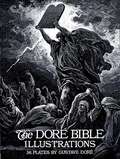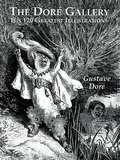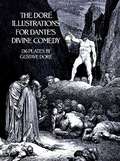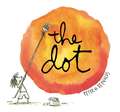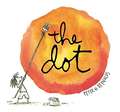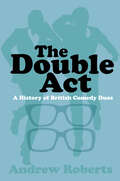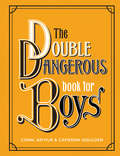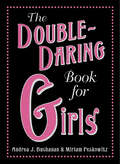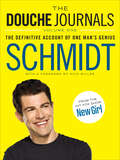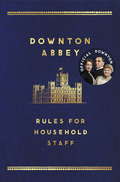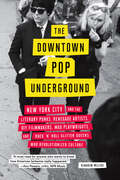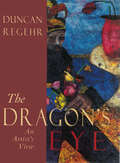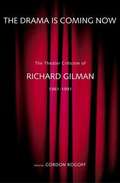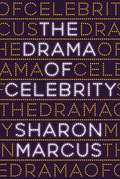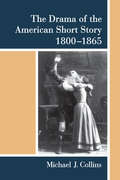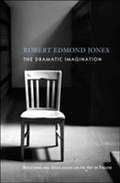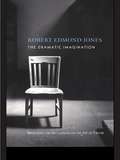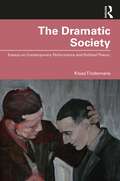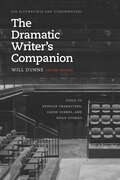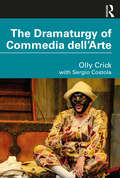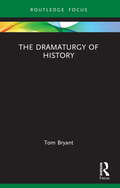- Table View
- List View
The Doré Bible Illustrations
by Gustave DoréNowhere but in the Bible were dramatic textual material and the artistry of Gustave Doré more perfectly matched. The Book of Books seemed to unleash a new power of creation in Doré not apparent in his previous work. In the Creation scenes, the horrifying visions of the Flood, the battle sequences with their monumental crowds, the plates depicting the life of Jesus -- many of which have now become the standard iconography -- and finally the vision of the New Jerusalem, Doré reached the fullest expressions of his extraordinary talent.This book collects all 241 plates -- long out of print -- that Doré executed for the Bible. In these plates, reproduced from outstanding early editions, the artist not only captures the dramatic intensity of the Scriptures, but sustains it longer than any other single artist was able to do. In addition, Doré reimagined all the scenes, so that what he produced was not a mere reworking of what centuries of other artists had already done, but a new and fresh visual interpretation of the Bible.Each plate is accompanied by the verses from the Authorized (King James) Version of the Bible that the scene depicts, and an Introduction by Millicent Rose covers Doré's life and art in general. This is a sumptuous book that everyone, from those interested in Scripture to lovers of great art, will be proud to possess.
The Doré Gallery: His 120 Greatest Illustrations (Dover Fine Art, History of Art)
by Gustave Doré Carol Belanger GraftonThis superb compilation showcases the art of Gustave Doré, one of the nineteenth century's most prolific and successful book illustrators. Brimming with stunning images created to accompany the world's greatest literature, this volume compiles the very finest and most famous plates from Doré's work.Scores of magnificent, finely wrought engravings feature such dramatic and powerful scenes as Don Quixote tilting at windmills, Christ driving the money-changers from the temple, Moses destroying the tablets inscribed with the Ten Commandments, and Charon rowing his ferry to the gates of Hell. Sources include immortal stories ranging from Milton's Paradise Lost and Dante's Divine Comedy to Coleridge's Rime of the Ancient Mariner, Poe's "The Raven," and more than a dozen other books.For graphic artists and designers, this collection will provide an outstanding assortment of royalty-free images. For lovers of art and literature, these inspired plates will provide the definitive imagery of a host of literary classics.
The Doré Illustrations for Dante's Divine Comedy: 136 Plates (Dover Fine Art, History of Art)
by Gustave DoréGustave Doré (1832–83) was perhaps the most successful illustrator of the nineteenth century. His Doré Bible was a treasured possession in countless homes, and his best-received works continued to appear through the years in edition after edition. His illustrations for Dante's Divine Comedy constitute one of his most highly regarded efforts and were Doré's personal favorites.The present volume reproduces with excellent clarity all 135 plates that Doré produced for The Inferno, Purgatory, and Paradise. From the depths of hell onto the mountain of purgatory and up to the empyrean realms of paradise, Doré's illustrations depict the passion and grandeur of Dante's masterpiece in such famous scenes as the embarkation of the souls for hell, Paolo and Francesca (four plates), the forest of suicides, Thaïs the harlot, Bertram de Born holding his severed head aloft, Ugolino (four plates), the emergence of Dante and Virgil from hell, the ascent up the mountain, the flight of the eagle, Arachne, the lustful sinners being purged in the seventh circle, the appearance of Beatrice, the planet Mercury, and the first splendors of paradise, Christ on the cross, the stairway of Saturn, the final vision of the Queen of Heaven, and many more.Each plate is accompanied by appropriate lines from the Henry Wadsworth Longfellow translation of Dante's work.
The Dos and Don'ts of Successful Filmmaking: Common Mistakes and How to Avoid Them
by Patrick WintersMistakes are easy to make, but often difficult to undo. The greater the knowledge and experience a filmmaker has, the fewer mistakes are made by them. This introductory-level guide to filmmaking teaches effective preproduction, production and postproduction with a focus on many of the common mistakes made and how to avoid them. Filled with practical advice and information on the process of successfully making a film, Patrick Winters guides you through the whole process from preproduction to postproduction, teaching how to plan a shoot, accomplish that shoot and then follow the steps needed to edit and mix your film, highlighting key considerations and potential pitfalls to avoid along the way. The book covers everything from getting your story production ready, securing funding and budgeting appropriately, casting actors, assigning crew members, developing production design, shooting efficiently and effectively, technical and aesthetic camera and lighting choices, sound considerations, picture and sound editing and mixing, to the final stages of distribution and exhibition. Drawing on Winters' years of filmmaking and teaching experience, this book provides you with all the technical and aesthetic knowledge required to make a film, highlights common mistakes to avoid, and explains where to put your time and money into where it shows, resulting in a successfully made film that will stand out from the crowd. A combination of what to do and what not to do, this is ideal for introductory-level filmmaking students, as well as independents just starting out.The online support material includes deal memo templates, walkie-talkie lingo, camera and sound reports, first AD roll call, distribution and exhibition and additional information on booming.
The Dot
by Peter H. ReynoldsWith a simple, witty story and free-spirited illustrations, Peter H. Reynolds entices even the stubbornly uncreative among us to make a mark - and follow where it takes us. Her teacher smiled. "Just make a mark and see where it takes you. " Art class is over, but Vashti is sitting glued to her chair in front of a blank piece of paper. The words of her teacher are a gentle invitation to express herself. But Vashti can’t draw - she’s no artist. To prove her point, Vashti jabs at a blank sheet of paper to make an unremarkable and angry mark. "There!" she says. That one little dot marks the beginning of Vashti’s journey of surprise and self-discovery. That special moment is the core of Peter H. Reynolds’s delicate fable about the creative spirit in all of us.
The Dot (Into Reading, Trade Book #12)
by Peter ReynoldsNIMAC-sourced textbook <p><p>Art class is over, but Vashti is sitting glued to her chair in front of a blank piece of paper. The words of her teacher are a gentle invitation to express herself. But Vashti can’t draw - she’s no artist. To prove her point, Vashti jabs at a blank sheet of paper to make an unremarkable and angry mark. "There!" she says. <p> That one little dot marks the beginning of Vashti’s journey of surprise and self-discovery. That special moment is the core of Peter H. Reynolds’s delicate fable about the creative spirit in all of us.
The Double Act: A History of British Comedy Duos
by Andrew RobertsThe double act has been at the heart of the British entertainment scene for over 150 years: from its start in the music halls, through radio shows such as Hancock’s Half Hour playing in virtually every household and on cinema and television, from Carry On films to Withnail and I. Explore the influence of comedy duos on their audience and how their performances evolved over time, the importance of the subtle art of the straight man next to the comic and discover some acts who might have passed you by. This book is a tribute to the comedians who have entertained the public for so long, dedicating their lives to adding a bit of laughter to the mundane everyday. The Double Act will appeal to all lovers of British comedy as it takes them through the golden moments of its history.
The Double Dangerous Book for Boys
by Conn IgguldenFrom the #1 New York Times bestselling author ofThe Dangerous Book for Boys comes the long-awaited sequel – another action-packed adventure guide featuring full-color illustrations, perfect for dads, grads, and boys of all ages.The Double Dangerous Book for Boys is a treasure trove of the essential activities and skills that have defined generations of boyhoods, from building a treehouse to fishing to finding true north.Designed with the same nostalgic look and feel as the first book, this companion volume includes more than 70 new chapters and important skills, fascinating historical information, and captivating stories, including:• How to pick a padlock• Making a Flying Machine• Tying a Windsor Knot• Advice from Fighting Men• Questions About the Law• Chess Openings• Making Perfume• Maps of Historic Empires: British, Ottoman, Genghis, Persian, Medes, Babylonian, Alexander• Great Speeches• Forgotten Explorers• How to Wire a Plug and Make a lamp• Writing a Thank You Letter• Polishing ShoesParents looking to reduce screen time and rediscover the great outdoors can use this book to fill weekend afternoons and summer days with wonder, excitement, adventure, and fun—learn to build go-carts and electromagnets, identify insects and spiders, and fly the world’s best paper airplanes.This charming and practical guide, packed with hundreds of full-color charts, maps, diagrams, and illustrations, will ignite the imagination and stimulate curiosity, and provide grandfathers, fathers, sons, and brothers the opportunity to deepen their bonds. Conn Iggulden has at last put together a second wonderful collection that is the essence of boyhood.
The Double-Daring Book for Girls
by Andrea J. Buchanan Miriam PeskowitzThe follow up to the bestselling The Daring Book for Girls—more outrageous fearless fun from making a raft to the art of the Japanese Tea Ceremony.In response to the resounding success of The Daring Book for Girls comes a second volume with all original material that promises to be full of even more daring adventure than the first. Girls will learn how to surf, horseback riding tips, April Fool’s Day history and pranks, how to make a labyrinth, how to sing, all about cowgirls, and how to organize a croquet tournament. Just as packed with creative and exciting material as the original, but double the fun, The Double-Daring Book for Girls is an adventure guidebook of stories, activities, facts, and games for daring girls everywhere.
The Douche Journals: The Definitive Account of One Man's Genius
by SchmidtBefore Jess was the new girl, there was Nick, Winston, Schmidt . . . and The Douchebag Jar.Originally devised to do nothing more than alter Schmidt's wardrobe, hairstyle, and personality, the Douchebag Jar has become an apartment-wide phenomenon, forever changing the way douche-like behavior is viewed, policed, and penalized.Compiled and annotated by Schmidt himself, The Douche Journals catalogs the jar's first years in existence. Every jar-worthy outfit, faux pas, and innuendo is captured exquisitely and for all time, transporting fans and scholars alike into the inner orbit of a master douche at the height of his powers. Comprehensive, unflinching, and fully illustrated, The Douche Journals delves deep into the annals of douchery.
The Downton Abbey Rules for Household Staff
by Carnival Productions Mr CarsonThe household staff of Downton Abbey carry out their duties with effortless dignity, finesse and pride. Yet how do they know how exactly to lay the table, when to leave the room to give Lord and Lady Grantham their privacy, how to care for Lady Mary's furs and which uniform to wear when? This recently recovered and fascinating staff handbook answers all of these questions and more. Covering all the main positions of the Downton household - footman, lady's maid, housekeeper, groundsman and more - and with a general introduction for new members of staff from Carson the Butler, this book tells you everything you need to know about working below stairs in the grand estate of Downton Abbey.
The Downton Abbey Rules for Household Staff
by Carnival Productions Mr CarsonThe household staff of Downton Abbey carry out their duties with effortless dignity, finesse and pride. Yet how do they know how exactly to lay the table, when to leave the room to give Lord and Lady Grantham their privacy, how to care for Lady Mary's furs and which uniform to wear when? This recently recovered and fascinating staff handbook answers all of these questions and more. Covering all the main positions of the Downton household - footman, lady's maid, housekeeper, groundsman and more - and with a general introduction for new members of staff from Carson the Butler, this book tells you everything you need to know about working below stairs in the grand estate of Downton Abbey.
The Downtown Pop Underground: New York City and the Literary Punks, Renegade Artists, DIY Filmmakers, Mad Playwrights, and Rock 'N' Roll Glitter Queens Who Revolutionized Culture
by Kembrew McLeod“McLeod’s deft and generous book tells of a constellation of avant-garde squatters, divas, and dissidents who reinvented the world.” —Jonathan Lethem, New York Times-bestselling author of Motherless BrooklynThe 1960s to early ’70s was a pivotal time for American culture, and New York City was ground zero for seismic shifts in music, theater, art, and filmmaking. The Downtown Pop Underground takes a kaleidoscopic tour of Manhattan during this era and shows how deeply interconnected all the alternative worlds and personalities were that flourished in the basement theaters, dive bars, concert halls, and dingy tenements within one square mile of each other. Author Kembrew McLeod links the artists, writers, and performers who created change, and while some of them didn’t become everyday names, others, like Patti Smith, Andy Warhol, and Debbie Harry, did become icons. Ambitious in scope and scale, the book is fueled by the actual voices of many of the key characters who broke down the entrenched divisions between high and low, gay and straight, and art and commerce—and changed the cultural landscape of not just the city but the world.“The story of underground artists of the 1960s and ’70s, an amalgam of bustling radical creativity and fearless groundbreaking work in art, music, and theater.” —Tim Robbins“Breathes new fire into a familiar history and is a must-read for anyone who wants to know how American bohemia really happened.” —Ann Powers, critic, NPR Music“Honors those who were at the forefront of a movement that transformed our understandings of sexuality and artistic freedom.” —Lily Tomlin
The Dragon's Eye
by Duncan RegehrNever one to be bewitched by the appearance of things, Duncan Regehr has devoted his life to going below the surface, reaching into the depths of psychology and the unconscious. His paintings and poetry explore his well-thought-out and penetrating assessment of humanity and the evolution of his social consciousness. Here he looks back at his relationship to nature, society, and the human condition. In series such as "Geoscapes," "Smokin Gun," and "The Grand Theme," he depicts environmental and societal changes - where we have come from and where we are headed. In the spectacular paintings presented here, Regehr's clarity of thought about our complex world is characteristically rendered with jewel-like use of color and many-faceted imagery
The Drama Is Coming Now: The Theater Criticism of Richard Gilman, 1961-1991
by Richard Gilman Gordon RogoffThis engrossing book presents the first collection in more than three decades of one of America's finest drama critics. Richard Gilman chronicles a major period in American theater history, one that witnessed the birth or spread of Off-Broadway, regional theater, nonprofit companies, and avant-garde performance, as well as growing interest in plays by women and minorities and in world drama. His writing, however, is more than a revealing look at an era. It is criticism for the ages. Insightful, provocative, and impassioned, the articles represent the full range of Gilman's interests. There are essays, profiles, and book reviews dealing with such topics as the "new naturalism" in theater, Brecht's collected plays, and the legacy of Stanislavski. There is also a generous sampling of Gilman's comments on plays by O'Neill, Miller, Chekhov, Albee, Ibsen, Anouilh, Beckett, Ionesco, Pinter, Fugard, and many others.
The Drama of Celebrity
by Sharon MarcusA bold new account of how celebrity worksWhy do so many people care so much about celebrities? Who decides who gets to be a star? What are the privileges and pleasures of fandom? Do celebrities ever deserve the outsized attention they receive?In this fascinating and deeply researched book, Sharon Marcus challenges everything you thought you knew about our obsession with fame. Icons are not merely famous for being famous; the media alone cannot make or break stars; fans are not simply passive dupes. Instead, journalists, the public, and celebrities themselves all compete, passionately and expertly, to shape the stories we tell about celebrities and fans. The result: a high-stakes drama as endless as it is unpredictable.Drawing on scrapbooks, personal diaries, and vintage fan mail, Marcus traces celebrity culture back to its nineteenth-century roots, when people the world over found themselves captivated by celebrity chefs, bad-boy poets, and actors such as the “divine” Sarah Bernhardt (1844–1923), as famous in her day as the Beatles in theirs. Known in her youth for sleeping in a coffin, hailed in maturity as a woman of genius, Bernhardt became a global superstar thanks to savvy engagement with her era’s most innovative media and technologies: the popular press, commercial photography, and speedy new forms of travel.Whether you love celebrity culture or hate it, The Drama of Celebrity will change how you think about one of the most important phenomena of modern times.
The Drama of South Africa: Plays, Pageants and Publics Since 1910
by Loren KrugerThe Drama of South Africa comprehensively chronicles the development of dramatic writing and performance from 1910, when the country came into official existence, to the advent of post-apartheid. Eminent theatre historian Loren Kruger discusses well-known figures, as well as lesser-known performers and directors who have enriched the theatre of South Africa. She also highlights the contribution of women and other minorities, concluding with a discussion of the post-apartheid character of South Africa at the end of the twentieth century.
The Drama of the American Short Story, 1800-1865
by Michael J. CollinsThe Drama of the American Short Story, 1800-1865 argues that to truly understand the short story form, one must look at how it was shaped by the lively, chaotic, and deeply politicized world of 19th-century transatlantic theater and performance culture. By resurrecting long-neglected theatrical influences on representative works of short fiction, Michael J. Collins demonstrates that it was the unruly culture of the stage that first energized this most significant of American art forms. Whether it was Washington Irving's first job as theater critic, Melville's politically controversial love of British drama, Alcott's thwarted dreams of stage stardom, Poe and Lippard's dramatizations of peculiarly bloodthirsty fraternity hazings, or Hawthorne's fascination with automata, theater was a key imaginative site for the major pioneers of the American short story. The book shows how perspectives from theater studies, anthropology, and performance studies can enrich readings of the short-story form. Moving beyond arbitrary distinctions between performance and text, it suggests that this literature had a social life and was engaged with questions of circumatlantic and transnational culture. It suggests that the short story itself was never conceived as a nationalist literary form, but worked by mobilizing cosmopolitan connections and meanings. In so doing, the book resurrects a neglected history of American Federalism and its connections to British literary forms.
The Dramatic Imagination: Reflections and Speculations on the Art of the Theatre
by Robert Edmond JonesThe author's innovations in set design and lighting brought new ideas to the stage, but it is greater understanding of design - its role at the heart of theater - that has continued to inspire theater students.
The Dramatic Imagination: Reflections and Speculations on the Art of the Theatre, Reissue (A\theatre Arts Book Ser.)
by Robert Edmond JonesThe Dramatic Imagination is one of the few enduring works written about set design.Robert Edmond Jones's innovations in set design and lighting brought new ideas to the stage, but it is greater understanding of design - its role at the heart of theater - that has continued to inspire theater students. The volume includes "A New Kind of Drama," "To a Young Stage Designer" and six other of Jones's "reflections."
The Dramatic Society: Essays on Contemporary Performance and Political Theory
by Klaas TindemansAll societies are, by their very nature, dramatic. They present themselves, especially for those who want to look back in time, as a fascinating and confusing whole of theatrical events and constructions. Sometimes the theatre itself succeeds in capturing that fascination and confusion. This book describes the dramatic society in the form of case studies that link politics, history and culture. The Dramatic Society uses selected plays to examine specific moments in history. Its range of subjects are extremely diverse, including Medea as an icon of terrorism, a choreography based upon Shakespeare’s As You Like It, horror movies about the German unification, a truth commission dealing with "human zoos", and the reconstruction of Ai Weiwei’s troubles with the tax authorities. This collection of insightful essays deals with theatrical performances – including happenings, installations and movies – of the past fifty years, with every chapter attempting to link artistic events with politics and political theory, from Hannah Arendt to Slavoj Žižek. This is a revealing assessment of the ways in which drama and politics become intertwined, offering crucial insights for scholars and students of theatre studies, performance studies, contemporary politics and cultural studies.
The Dramatic Writer's Companion: Tools to Develop Characters, Cause Scenes, and Build Stories
by Will DunneMoss Hart once said that you never really learn how to write a play; you only learn how to write this play. Crafted with that adage in mind, The Dramatic Writer's Companion is designed to help writers explore their own ideas in order to develop the script in front of them. No ordinary guide to plotting, this handbook starts with the principle that character is key. "The character is not something added to the scene or to the story," writes author Will Dunne. "Rather, the character is the scene. The character is the story." Having spent decades working with dramatists to refine and expand their existing plays and screenplays, Dunne effortlessly blends condensed dramatic theory with specific action steps--over sixty workshop-tested exercises that can be adapted to virtually any individual writing process and dramatic script. Dunne's in-depth method is both instinctual and intellectual, allowing writers to discover new actions for their characters and new directions for their stories. Dunne's own experience is a crucial element of this guide. His plays have been selected by the Eugene O'Neill Theatre Center for three U. S. National Playwrights Conferences and have earned numerous honors, including a Charles MacArthur Fellowship, four Bay Area Theatre Critics Circle Awards, and two Drama-Logue Playwriting Awards. Thousands of individuals have already benefited from his workshops, and The Dramatic Writer's Companion promises to bring his remarkable creative method to an even wider audience.
The Dramatic Writer's Companion: Tools to Develop Characters, Cause Scenes, and Build Stories (Chicago Guides to Writing, Editing, and Publishing)
by Will DunneSpark your creativity, hone your writing, and improve your scripts with the self-contained character, scene, and story exercises found in this classic guide.Having spent decades working with dramatists to refine and expand their existing plays and screenplays, Dunne effortlessly blends condensed dramatic theory with specific action steps—over sixty workshop-tested exercises that can be adapted to virtually any individual writing process and dramatic script. Dunne’s in-depth method is both instinctual and intellectual, allowing writers to discover new actions for their characters and new directions for their stories. The exercises can be used by those just starting the writing process and by those who have scripts already in development. With each exercise rooted in real-life issues from Dunne’s workshops, readers of this companion will find the combined experiences of more than fifteen hundred workshops in a single guide.This second edition is fully aligned with a brand-new companion book, Character, Scene, and Story, which offers forty-two additional activities to help writers more fully develop their scripts. The two books include cross-references between related exercises, though each volume can also stand alone.No ordinary guide to plotting, this handbook centers on the principle that character is key. “The character is not something added to the scene or to the story,” writes Dunne. “Rather, the character is the scene. The character is the story.” With this new edition, Dunne’s remarkable creative method will continue to be the go-to source for anyone hoping to take their story to the stage.“Dunne mixes an artist’s imagination and intuition with a teacher’s knowledge of the craft of dramatic writing.” —May-Brit Akerholt, award-winning dramaturg
The Dramaturgy of Commedia dell'Arte
by Olly CrickThis book examines Commedia dell'Arte as a performative genre, and one that should be analysed through the framework of dramaturgy and dramaturgical practice. This volume examines the way Commedia has been explored in the twentieth and twenty-first centuries, and details its reinventors’ dramaturgic approaches, both focusing in on specific examples such as Jacques Lecoq, Dario Fo and Antonio Fava, and also suggesting how modern discoveries may aid the study of historical performance practice. It also discusses how audiences read and receive masks; the relationship between the different masked and unmasked roles; the range of performance activities that come under the umbrella term ‘improvisation’; the performative construction of a role performed ‘live’ from a scenario; the role of language and embodied locality in performance; and the performative relationship between performative commedia and literary tragicomedy. Its focus is dramaturgy, and so it may be read both as a text describing various theatrical practices from 1946 onwards and as a way of creating one’s own contemporary Commedia practice. It is an important read for any student or scholar of Commedia dell'Arte and theatre historians grappling with the status of this unique and influential performance form.
The Dramaturgy of History (Focus on Dramaturgy)
by Tom BryantIn this book, dramaturg Tom Bryant shares with readers and writers his insights into the process of historical adaptation. The book uses case studies from Bryant's collaborations with playwrights on successful Broadway and regional productions to work through the fundamental questions of historical adaptation: Why do you want to adapt history? For what purpose? What is your approach? How does that approach affect the portrayal of events? How does that choice by the playwright and the dramaturg then determine the framing and focus in the story, the selection of the key events and the choice of characters? What is the meaning you want the audience to take away from the events? How is your adaptation of past events relevant to contemporary times? In addition, the author explores the moral and ethical responsibilities involved for the dramaturg and the playwright in the adaptation of history and how issues of diversity, equity and inclusion impact the presentation of historical material. This is an indispensable resource for anyone whose craft brings them to the task of adapting historical material for the stage—in postgraduate work, teaching or professional practice.
